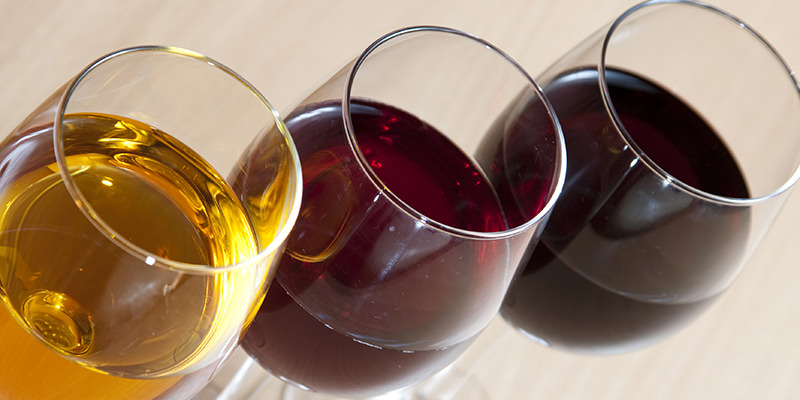
Some of us are already confronting the minor (so far) physical indignities of age: deeper laugh lines, achier backs, much much longer hangovers. Believe it or not, wine goes through some significant physical changes as it ages, too. But unlike the rest of us, sadly noticing we can’t get rid of our bellies as easily, wine ages more like a…Clooney. A well-aged wine will certainly change physically, but with a trend toward enriching its character, evolving into something different but wholly fascinating. And still, quite possibly, the Sexiest Man (wait, wine?) Alive.
One of the more interesting, and sometimes startling, changes in an aging wine is the change in color. We tend to like our wines (ruby) red and (sunny) white. But as they age that color may well change. Much of it has to do with the impact of oxygen and the amount of tannins in the wine (always higher with red wines, since the tannins that influence wine live largely in the grape’s skin, and red wines have more contact with the skins than white wines).
Tannins are basically molecular compounds called “phenols” that can influence both the way a wine tastes, smells, and looks as it ages. Oxygen is, well, the stuff we breathe in a bunch most every day. A gradual amount of oxygen will help to goose a potentially enriching aging reaction between tannins and other compounds in a wine. Too much oxygen and you end up with something funky and undrinkable.
“The bluish-red color of a young wine is all due to pigments in the grape,” Enologist Jim Kennedy told Wired. “Those initial plant derived compounds go away after a couple years.” In there place: darker, rusty red colors which, per Wired, are “long polymer chains that link the grape pigments to the tannins.” Basically, as a wine ages, the tannins react with a certain kind of pigment that make it, say, a nice ruby red. But as the tannins react with those ruby red pigments over time, they create what are called “polymeric pigments,” which have a more brick red hue. According to Iowa State University, “it has been observed that the polymeric pigments account for 50% of the color density in one-year-old wine. As the wine matures and more polymeric pigments are formed, the color shifts from red to orange and brick red.”
What’s interesting is how different wines change. White wines will tend to enrich their color—going from a lighter golden, say, to a richer yellow-gold, more often the result of over-oxidation than any heavy tannin concentration present in the wine. Red wines that start out a richer red will actually thin out in color, though despite being “lighter” they’ll take on those rusty brownish-hues—thanks to our good friends, polymeric chains. (Your aged red wine should not look like a bottle of Coke, FYI. There should still be a fundamentally red component to it.)
